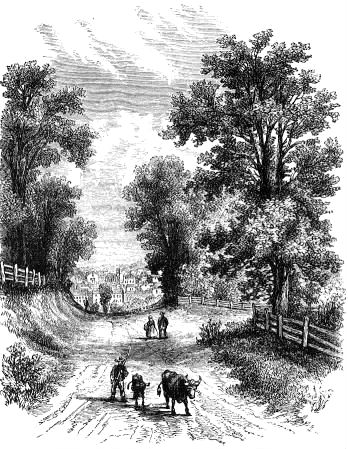 For thousands of years, the natural topography of this site formed a valley and small sheltered cove off the Hudson River, also known as the North River.
For thousands of years, the natural topography of this site formed a valley and small sheltered cove off the Hudson River, also known as the North River.
This solitary break between the bluffs of today’s Morningside Heights and Washington Heights provided the only direct river access to the area’s earliest native residents as well as a convenient inroad to the area’s early 17th-century non-native arrivals.
Harlem Cove today is Manhattanville. Manhattanville sits in a valley formerly called Moertje David’s Vly (“Mother David’s Valley”; in Dutch, Vly is short for vallei, or “valley”) during the Dutch Colonial period and as Harlem Cove during the English Colonial Period.
During the American Revolutionary War, the valley was also known as the Hollow Way, where the main action of the Battle of Harlem Heights began under the command of General George Washington.
On November 16th, 1776, in the British attack on Fort Washington, on this date, Lord Hugh Percy’s column drove in the American pickets at Harlem Cove.
They then attacked the forces under Lieutenant Colonel Lambert Cadwalader in the old Harlem Heights defenses, which were located at today’s West 147th, 153d, and 159th Streets).
In 1806, the village of Manhattanville was established in this valley around the crossroads of Bloomingdale Road and Manhattan Street, now roughly Broadway and 125th Street.
During the War of 1812, the valley’s southern ridges figured as the site of the Manhattanville Pass, whose defense fortifications and breastworks included Fort Laight and Blockhouse No. 4, which became the sites of Morningside Gardens Houses and PS 36, respectively.
Village’s original streets were laid out by Jacob Schieffelin and other wealthy merchants, mostly Quakers, who had country seats in the area.
The town thrived as a result of the development of Manhattan Street from the Hudson River, whose convenient access also became a crucial catalyst in the growth of the older village of Harlem to the southeast on the Harlem River.
Situated at approximately the same latitude, Harlem and Manhattanville flourished together throughout the 19th century as the two most prominent villages in upper Manhattan.
Via Source
Become a Harlem Insider!
By submitting this form, you are consenting to receive marketing emails from: . You can revoke your consent to receive emails at any time by using the SafeUnsubscribe® link, found at the bottom of every email. Emails are serviced by Constant Contact








